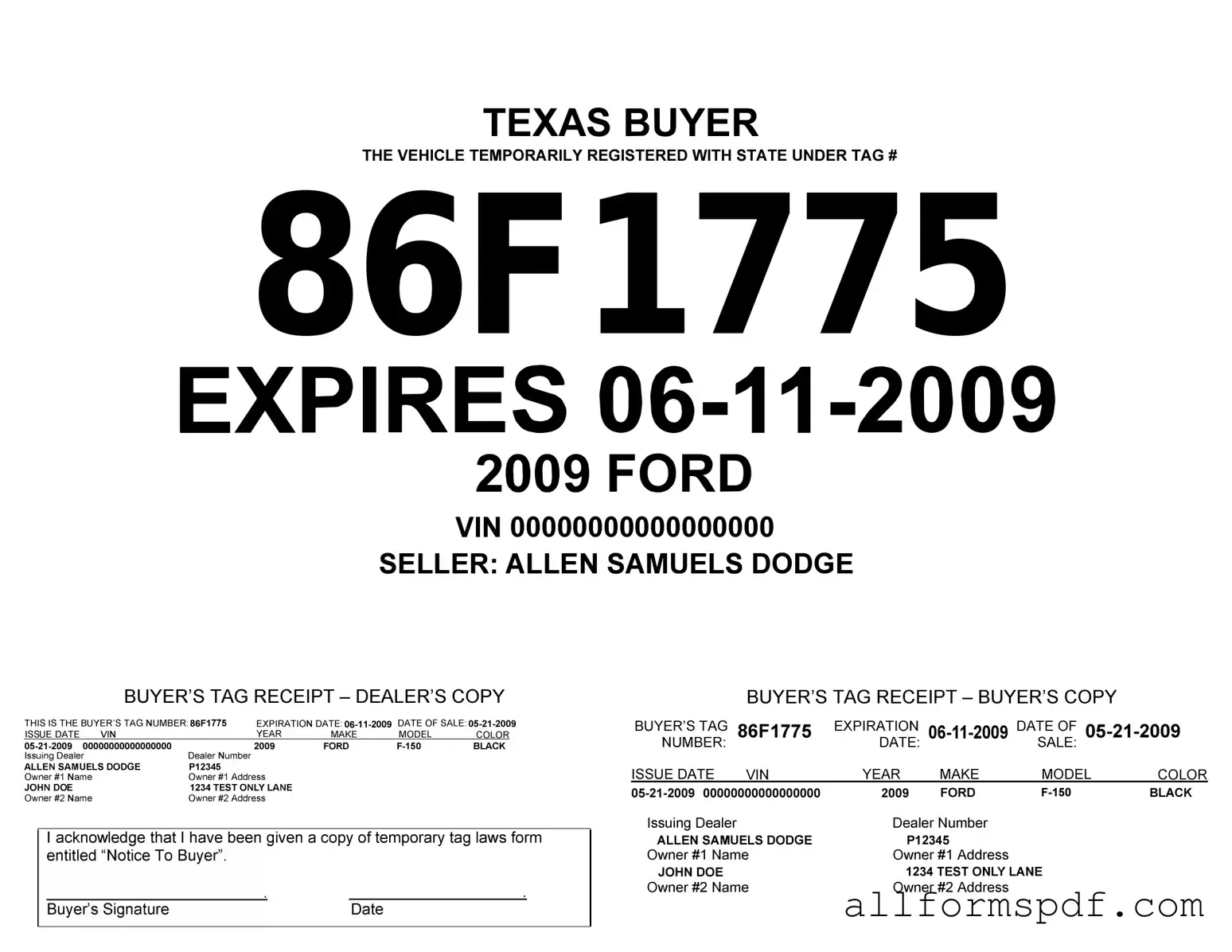Filling out the Texas Temporary Tag form can be straightforward, but several common mistakes can lead to delays or complications. One frequent error is providing incorrect vehicle information. This includes the make, model, and year of the vehicle. Ensuring that this information matches the vehicle’s title is crucial to avoid any issues.
Another mistake often made is neglecting to sign the form. A signature is a critical component of the application process. Without it, the form may be considered incomplete, resulting in a denial of the temporary tag request.
People sometimes overlook the importance of including the correct identification number. This can refer to the Vehicle Identification Number (VIN) or the owner’s driver's license number. Double-checking these numbers can prevent unnecessary processing delays.
Additionally, applicants may fail to provide proof of insurance. Texas law requires that vehicles be insured before a temporary tag can be issued. Not including this documentation can lead to immediate rejection of the application.
Another common oversight is not paying the required fees. Temporary tags come with associated costs, and failure to include payment can stall the process. It is essential to confirm the fee amount and ensure that payment is included with the form submission.
Some individuals also make the mistake of submitting the form without verifying the information. Errors can easily go unnoticed, so taking a moment to review the completed form can help catch any mistakes before submission.
In some cases, applicants might submit the form without the necessary supporting documents. These documents can include proof of ownership or identification. Missing documents can lead to delays or a need to resubmit the application.
People may also misinterpret the instructions on the form. It is important to read all directions carefully to ensure compliance with the requirements. Misunderstanding these instructions can lead to errors that complicate the process.
Lastly, individuals sometimes submit the form without checking the submission deadline. Each temporary tag is valid for a limited time, and ensuring timely submission is essential for compliance with Texas laws.
